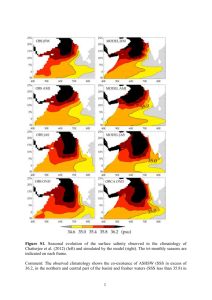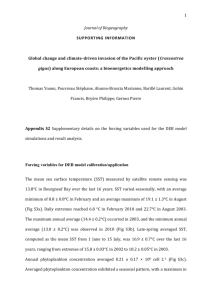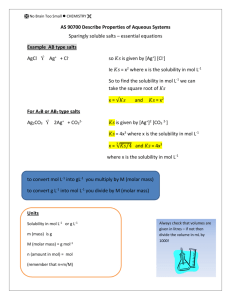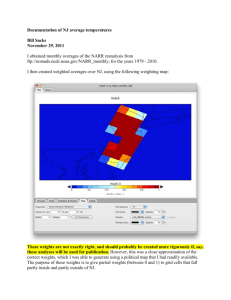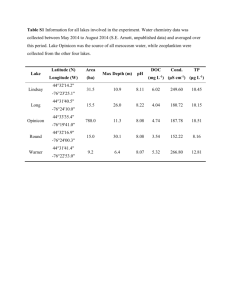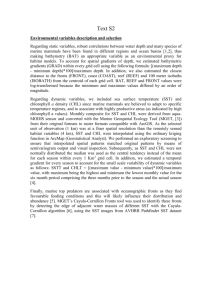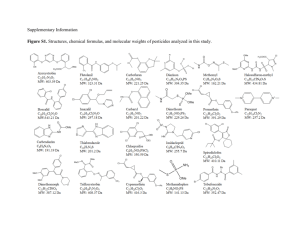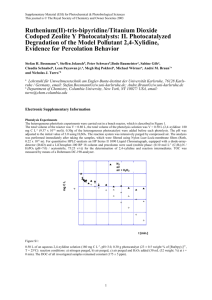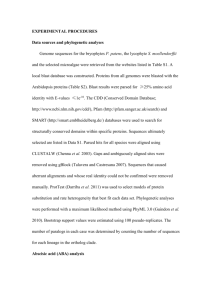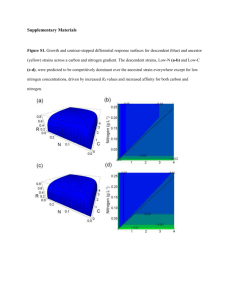ecy1200-sup-0007-AppendixE
advertisement
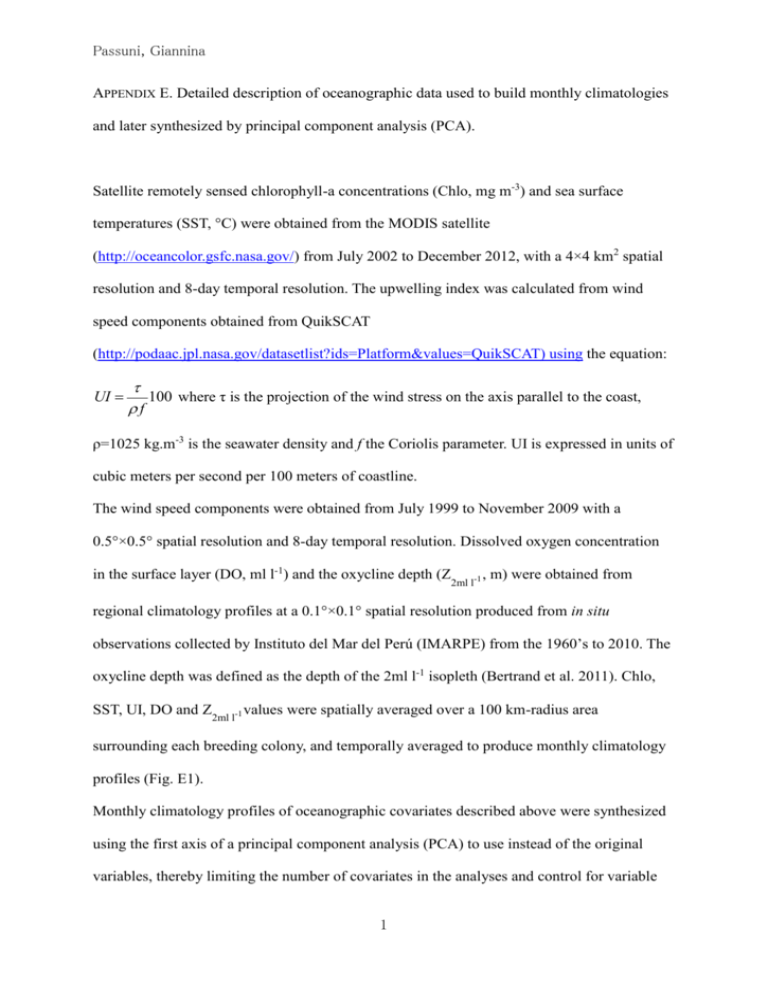
Passuni, Giannina APPENDIX E. Detailed description of oceanographic data used to build monthly climatologies and later synthesized by principal component analysis (PCA). Satellite remotely sensed chlorophyll-a concentrations (Chlo, mg m-3) and sea surface temperatures (SST, °C) were obtained from the MODIS satellite (http://oceancolor.gsfc.nasa.gov/) from July 2002 to December 2012, with a 4×4 km2 spatial resolution and 8-day temporal resolution. The upwelling index was calculated from wind speed components obtained from QuikSCAT (http://podaac.jpl.nasa.gov/datasetlist?ids=Platform&values=QuikSCAT) using the equation: UI = t 100 where τ is the projection of the wind stress on the axis parallel to the coast, rf ρ=1025 kg.m-3 is the seawater density and f the Coriolis parameter. UI is expressed in units of cubic meters per second per 100 meters of coastline. The wind speed components were obtained from July 1999 to November 2009 with a 0.5°×0.5° spatial resolution and 8-day temporal resolution. Dissolved oxygen concentration in the surface layer (DO, ml l-1) and the oxycline depth (Z 2ml l-1 , m) were obtained from regional climatology profiles at a 0.1°×0.1° spatial resolution produced from in situ observations collected by Instituto del Mar del Perú (IMARPE) from the 1960’s to 2010. The oxycline depth was defined as the depth of the 2ml l-1 isopleth (Bertrand et al. 2011). Chlo, SST, UI, DO and Z 2ml l-1 values were spatially averaged over a 100 km-radius area surrounding each breeding colony, and temporally averaged to produce monthly climatology profiles (Fig. E1). Monthly climatology profiles of oceanographic covariates described above were synthesized using the first axis of a principal component analysis (PCA) to use instead of the original variables, thereby limiting the number of covariates in the analyses and control for variable 1 Passuni, Giannina interdependence. FIG. E1. Monthly climatology profiles of (a) sea-surface temperature (SST), (b) chlorophyll (Chlo), (c) upwelling index (UI), (d) oxycline depth (Z 2ml l-1 ) and (e) dissolved oxygen concentration (DO) at the surface. The boxplots were constructed from the site-specific climatology profiles built over an area covering a radius of 100 km around each breeding site. Periods encompassed 1999-2009 for SST, Chlo and UI and 1960-2010 for DO and Z 2 2ml l-1 . Passuni, Giannina FIGURE E2. Results from a principal component analysis of oceanographic covariates. The xaxis represents the first principal component (89.1% of the variance) and the y-axis represents the second principal component (7.3% variance). LITERATURE CITED Bertrand, A., A. Chaigneau, S. Peraltilla, J. Ledesma, M. Graco, F. Monetti, and F. P. Chavez. 2011. Oxygen: a fundamental property regulating pelagic ecosystem structure in the coastal southeastern tropical Pacific. PloS one 6:e29558. Bertrand, S., R. Joo, C. Arbulu Smet, Y. Tremblay, C. Barbraud, and H. Weimerskirch. 2012. Local depletion by a fishery can affect seabird foraging. Journal of Applied Ecology 49:1168–1177. Zavalaga, C. B., G. Dell’Omo, P. Becciu, and K. Yoda. 2011. Patterns of GPS tracks suggest nocturnal foraging by incubating Peruvian pelicans (Pelecanus thagus). PloS one 6:e19966. 3
